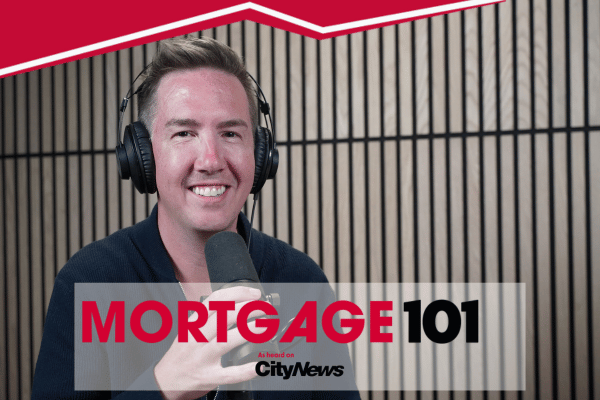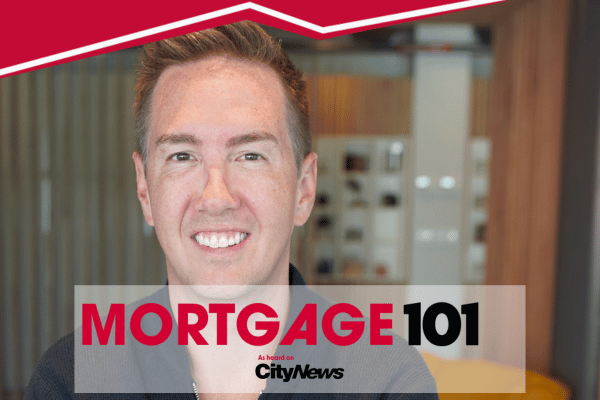How affordable is the Nova Scotian market? Real estate is more affordable in Nova Scotia compared to other markets. Clinton and Todd reflect on the challenges of buying starter homes, citing increased property values and stagnant income growth.
Mortgage 101 – “The Bank of Canada met and I was shocked” | August 2022 Part 1
In this episode of Mortgage 101 with Clinton Wilkins and Todd Veinotte, as heard on CityNews 95.7 and CityNews 101.1, the guys talk about why Clinton was so shocked by the results from the Bank of Canada meeting. Find out all you need to know about the current economic station in Canada, specifically how it impacts mortgages and home equity lines of credit. They guys talk about if interest rates will go down, the current inflation rate and what variable rate mortgages look like right now.
Mortgage 101 with Clinton Wilkins & Todd Veinotte: “The Bank of Canada met and I was shocked”
Don’t feel like watching the video? Check out the transcript below.
Transcript:
“The Bank of Canada met and I was shocked”
Todd Veinotte: [00:00:00:05] So what do you want to start with? Bank of Canada?
Clinton Wilkins: [00:00:01:20] I think Bank of Canada. I mean, you know, we’ve just gone through this. You know, just a couple weeks ago, the Bank of Canada met and I was shocked.
Todd Veinotte: [00:00:11:25] Yeah, well, by the full basis point.
Clinton Wilkins: [00:00:14:00] Yeah. Well, we had everybody was planning on 75 basis point increase and when it was 100 basis point, obviously we were scrambling a little bit. We had all our collateral ready.
You know, our producer here, Johnathan Snow, he also does all our like operations, technology, marketing things. And we had everything ready to roll as soon as the Bank of Canada met. You know, we were watching it live.
Todd Veinotte: [00:00:36:17] Yeah.
Clinton Wilkins: [00:00:36:28] And I actually watched the first bit of the newscast that the Bank of Canada governor did when they did a 100 basis point increase. And I think we’re all pretty surprised.
Todd Veinotte: [00:00:48:08] You were shocked.
Clinton Wilkins: [00:00:49:24] I was shocked because, you know, people were kind of saying 75 basis points would be aggressive. Maybe some people thought it might have been 50. And when it was 100, we were like, “wow, these guys are serious.”
Todd Veinotte: [00:01:02:27] Yeah. And for those who don’t know, the this is not an economic show per se, but economics plays a big role in this, of course.
Clinton Wilkins: [00:01:12:19] Yeah.
What does inflation have to do with the situation?
Todd Veinotte: [00:01:13:02] So the whole point of, people might go “why you got to raise inflation or the interest rate is it’s all about curbing inflation.” Can you explain that?
Clinton Wilkins: [00:01:19:27] Yeah, because when they increase the cost of borrowing, what that really means is a lot of households are going to spend more on interest, whether that’s mortgage interest or maybe interest on business, you know, they’re all going to spend more money. And what they’re trying to do is to get consumers and probably businesses to stop spending as much money and start hoarding cash.
So, you know, artificially that kind of really happened during the pandemic because, you know, we were all locked down. You know, Canadians really haven’t saved as much money as they did over the last couple of years because they weren’t going out to eat and buying consumer goods and all these things.
And then when things started opening up, people had so much available cash, we’ll say, it kind of flooded the market. And, you know, there’s been a lot of supply chain challenges.
Will interest rates go down?
Todd Veinotte: [00:02:10:05] Yeah, that’s easing I hear?
Clinton Wilkins: [00:02:12:27] That’s easing a little bit. And, you know, the inflation numbers came out in July and even in Canada, inflation was about 8%. And the Bank of Canada governor said that they think that we might even see a little bit more increase in the inflation before it starts softening. But they’re thinking the inflation is going to start coming down here by the end of the year.
Todd Veinotte: [00:02:35:09] Right. Okay. So that’s the that’s the purpose of raising inflation rates. So the bottom line is you were shocked though. you weren’t anticipating it. Do you think it was, do you have any opinion on whether it was too aggressive or not or what?
Clinton Wilkins: [00:02:47:04] I would say the Bank of Canada gets it right about 0% of the time.
Todd Veinotte: [00:02:50:26] That much?
Clinton Wilkins: [00:02:52:17] 0%
Todd Veinotte: [00:02:53:28] We can give them 10%.
Clinton Wilkins: [00:02:55:03] Well, maybe 10%.
Todd Veinotte: [00:02:55:14] Sometimes you have luck in, everybody gets 10% luck factor.
“it’s turn the dial up, turn the dial down, turn the dial up, turn the dial down”
Clinton Wilkins: [00:02:58:10] And there was an article that came out either before the Bank of Canada met or just afterwards, and it said every time there’s been an increase like this, within 13 months, they start lowering the key overnight rate again because, you know, we get into a recession situation.
So it’s turn the dial up, turn the dial down, turn the dial up, turn the dial down. The problem is that like right now, obviously, inflation was a bit of a runaway train and they’re trying to get that back in line. Maybe they were too slow at kind of increasing the key overnight rate and things kind of got a little bit out of control.
So they’re trying to get that back and they use this term called “soft landing.” And, you know, I think what they want to do is they obviously want to increase the cost of borrowing, but they don’t want to cause a massive recession.
So they want to slow things, you know, bring the inflation down. The target is like 2-3% is where they want the inflation. And, you know, we are almost triple that right now.
What’s happening to Canadians in variable rates?
Todd Veinotte: [00:03:55:17] All right. So let me ask you this question: You had a lot of your a lot of clients, I’m sure a lot of people, not only your clients, but people in general purchasing and it’s almost as though they didn’t realise that this was going to happen, that interest rates are going to go up?
Clinton Wilkins: [00:04:09:18] And I’ve used the term before, like Canadians were drunk on cheap money. You know, I think it was low for so long. And here’s kind of the interesting fact. Pre-pandemic, the prime rate was 3.95. Today it’s 4.7. It’s not that much higher.
But I think it was just so low for so long that we forget that variable actually varies. And you know, what goes up must come down. And, you know, we enjoyed some very low cost of borrowing for quite some time. Now it’s costing a little bit more and it will balance out. I’m in a variable rate mortgage myself.
Todd, I believe historically about 60% of Canadians are in a fixed rate. We’re pretty conservative overall in Canada and typically in a fixed rate, you’re paying more to have that security. And I think if people are right at the top of their budget, you know, if there’s issues around affordability, there’s nothing wrong with a fixed rate, Todd. But, if you can take a little bit of risk, typically you will get the return with the variable rate.
Home equity lines of credit
Historically, it is lower. I believe it’s going to come down in the next 12 to 18 months. And those consumers that are feeling a bit of a pinch.
Clinton Wilkins: [00:05:30:09] There are solutions. Maybe it’s a solution around extending the amortization or maybe it’s a solution of doing a mid term refinance, maybe pulling some equity out, maybe re-amortize the debt? And here’s a little interesting tidbit:
There’s a lot of Canadians that have home equity lines of credit, a HELOC. We use the word HELOC quite a lot. We are paying out a lot of HELOCs into amortize charges. Typically a HELOC, the rates are at prime plus 50 basis points. So right now, people with HELOC, a lot of people are paying about 5.2%.
And, you know, in a refinance or even a transfer situation, you know, if you just take the debt and you don’t add anything to it, some consumers are getting like prime -95 on an amortized charge, like over 25 years.
Todd Veinotte: [00:06:20:29] Right.
Clinton Wilkins: [00:06:21:11] And the difference in that rate is almost 1.5%. And HELOCs sometimes are forever. People aren’t great at paying it down. Obviously, if it’s a savvy consumer and they’re using it for investment purposes or something like that, I think it’s,
Todd Veinotte: [00:06:36:10] Or just as a contingency.
Clinton Wilkins: [00:06:37:13] As a contingency, I think that makes sense. But a lot of people who had home equity lines of credit over the years and they certainly were popular like in the 90s and the early 2000s, you know, they use them and then they’re just paying the interest.
So a lot of our consumers are a lot of people who are coming to us want to pay out these home equity lines of credit. And we’re putting them into an amortized charge, which I think is pretty interesting.
Todd Veinotte: [00:07:00:13] Yeah, well, look, people just they need to hang on, right? If you’re tight, you, like you said, sometimes you got to rein in your spending.
Clinton Wilkins: [00:07:09:03] I think you certainly need to rein in the spending. And I think when we’re back, we are going to talk a little bit more about wants and needs. And really what does that look like?
Todd Veinotte: [00:07:18:02] That’s the segue way. Almost like we knew what we’re doing there, right?
If you have any questions, get in touch with us at Clinton Wilkins Mortgage Team! You can call us at (902) 482-2770 or contact us here.


